Two atoms interact with each other according to the following force F and potential energy V diagrams. What is their equilibrium separation?
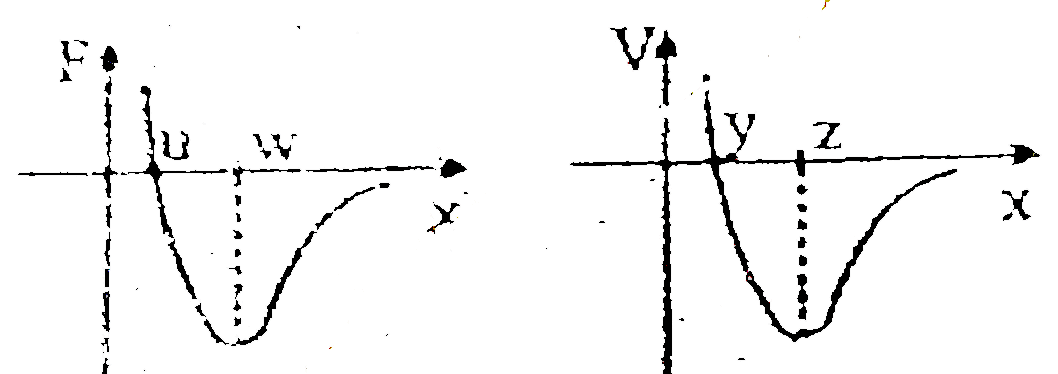
the separation u which is equal to y
the separation u which is equal to z
the separation w which is equal to y
the separation w which is equal to z
The correct Answer is:B
At equuilibrium separation, F=0 and V is minimum.
Topper's Solved these Questions
Similar Questions
What are the other names of potential energy ?
View SolutionLower plate of a parallel plate capacitor is fixed on a horizontal insulating surface. The upper plate is suspended above it using on elastic cord of force constant K. The upper plate has negligible mass and area of each plate is A. When there is no charge on the plates the equilibrium separation between them is d. When a potential difference = V is applied between the plates the equilibrium separation changes to x.
(a) Calculate V as a function of x.
(b) Find the value of x for which V is maximum. Calculate the maximum value of V(=Vmax)
(c) What will happen if V>Vmax ?
(d) Plot a rough graph showing variation of equilibrium separation (x) with V
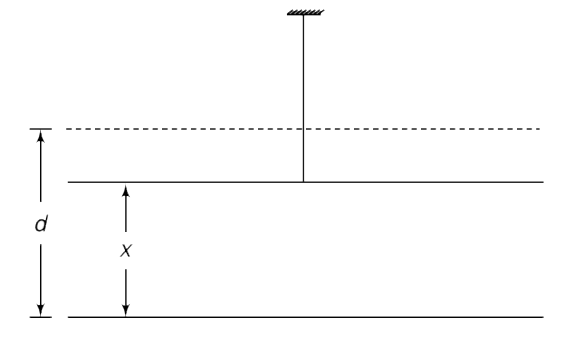 View Solution
View Solution
Knowledge Check
- Question 1 - Select One
When two hydrogen atoms approach each other to form H2 molecule, the potential energy
diagram obtained is : (d = interatomic distance )A B
B C
C D
D
- Question 2 - Select One
The potential energy in given according to the following graph.
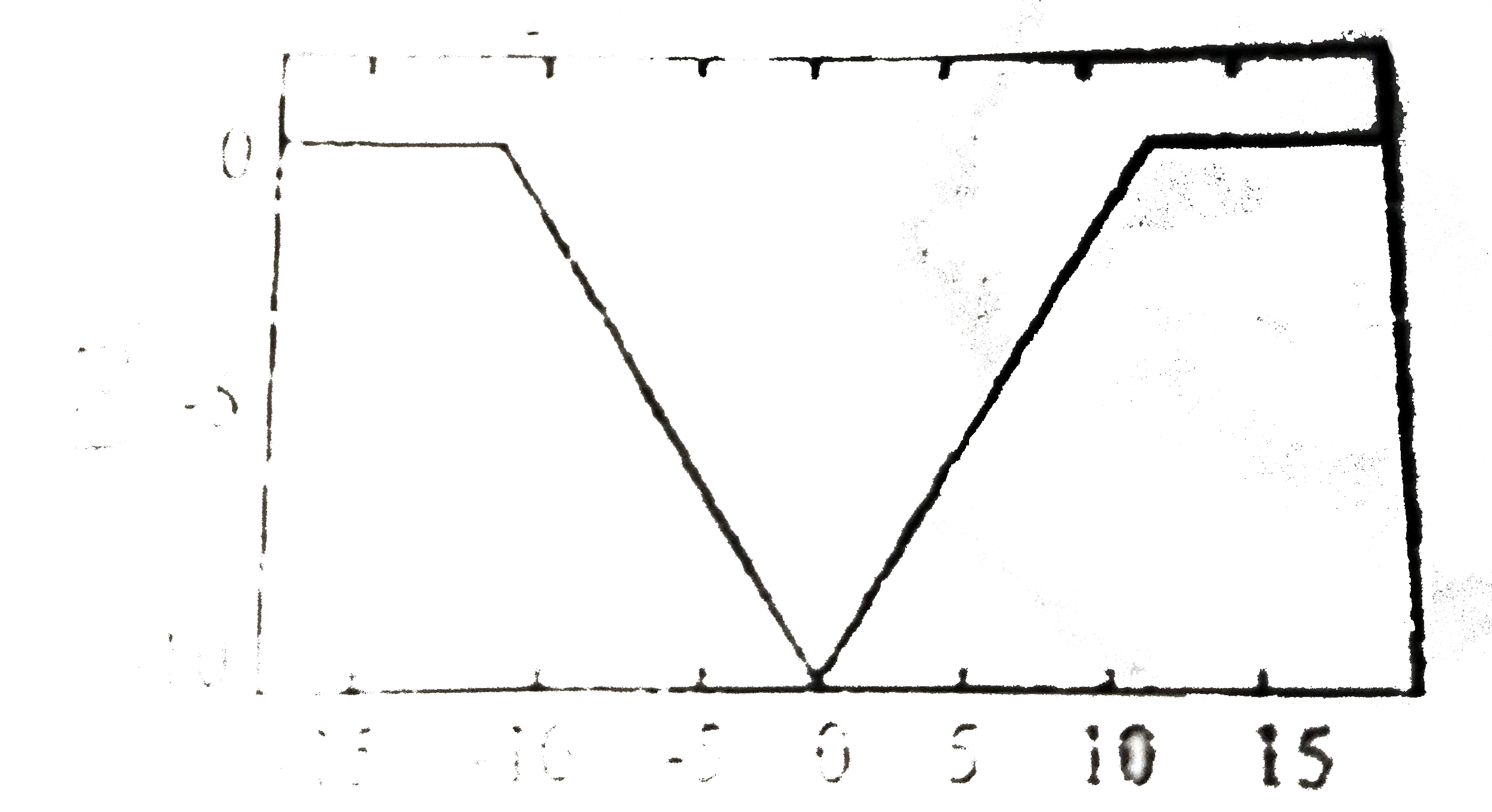
Which of the following graph represent the force?A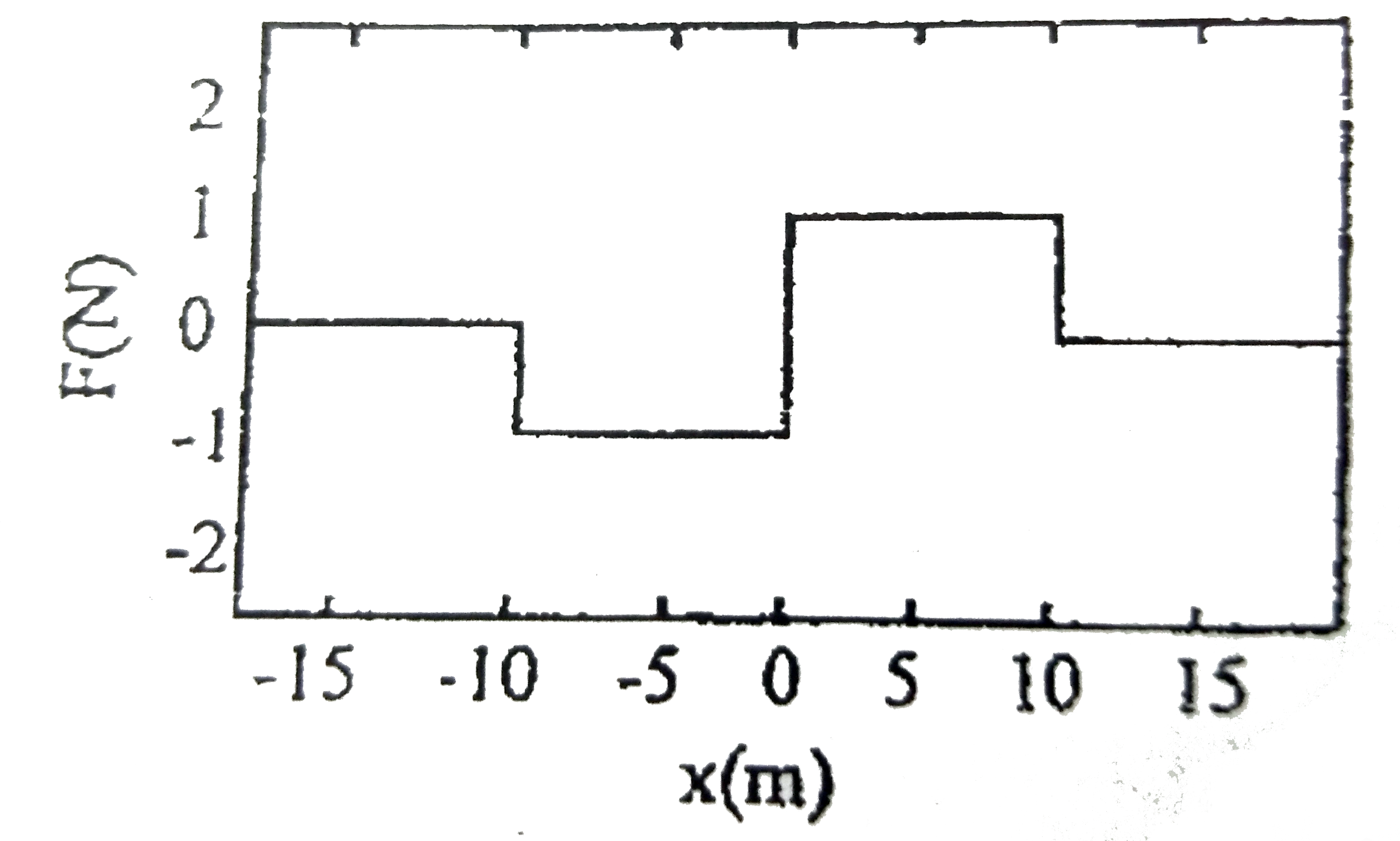 B
B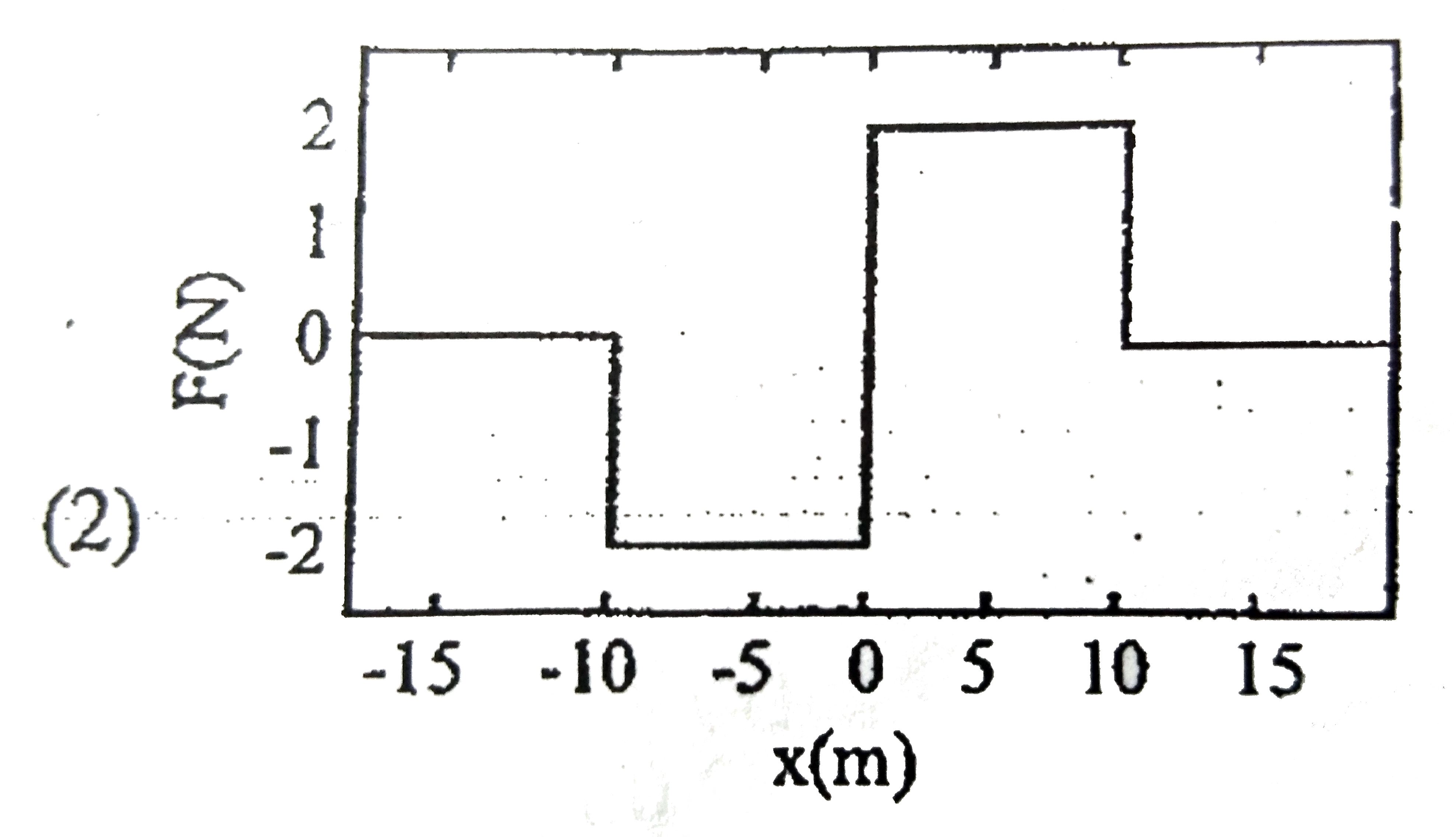 C
C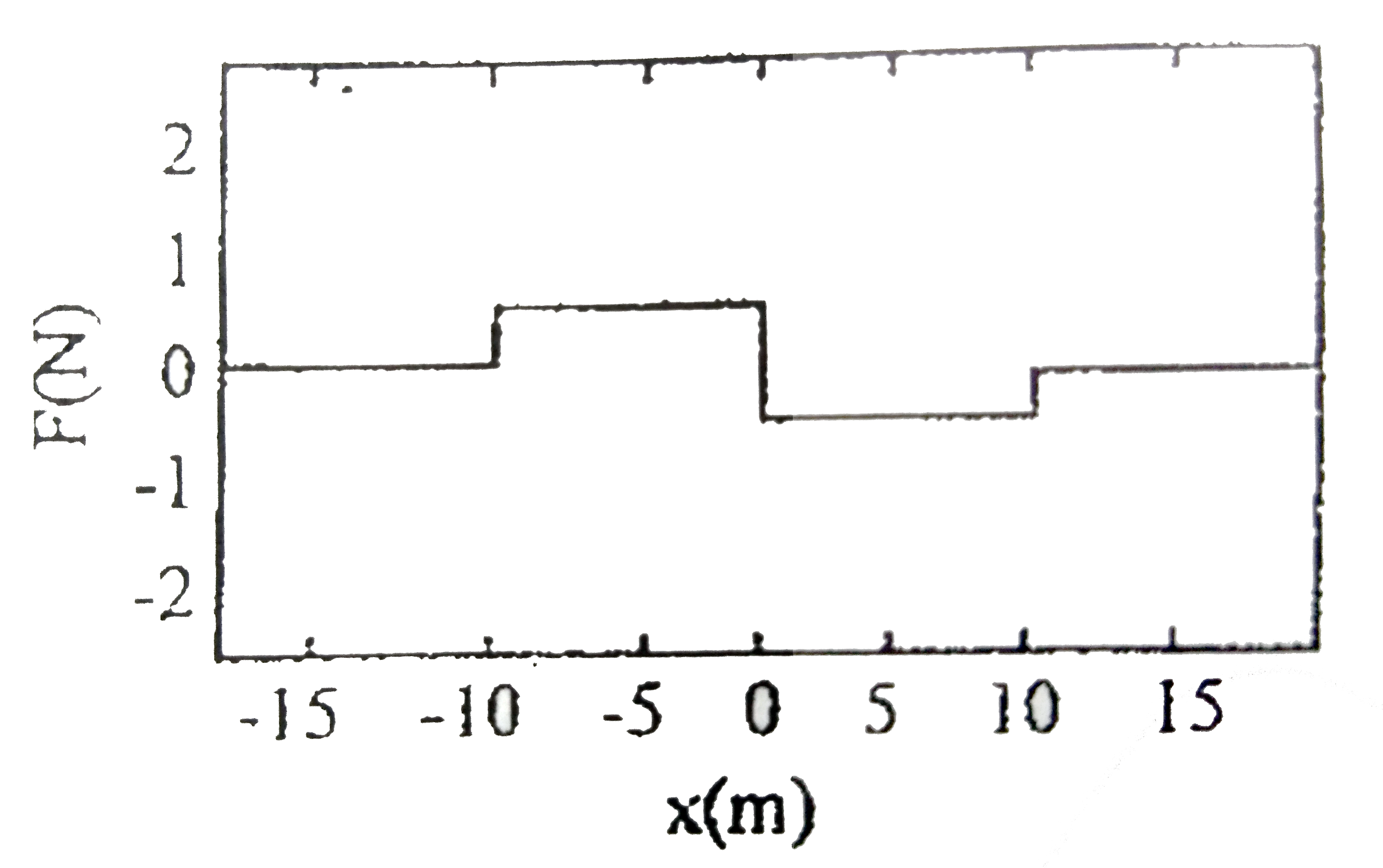 D
D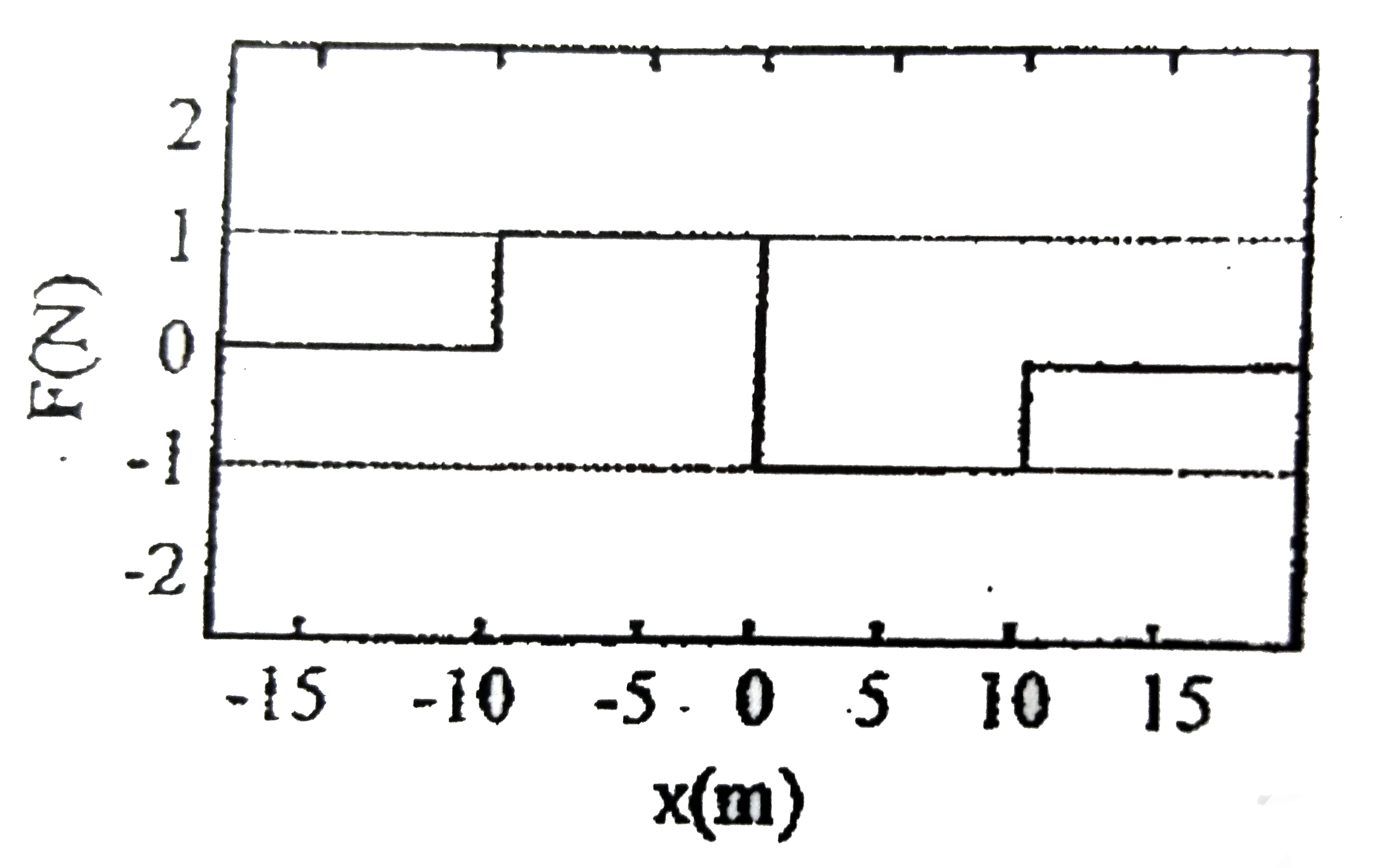
- Question 3 - Select One
The potential energy U of two atoms of a diatomic molecule as a function of distance r between the atoms as shown in the given figure.
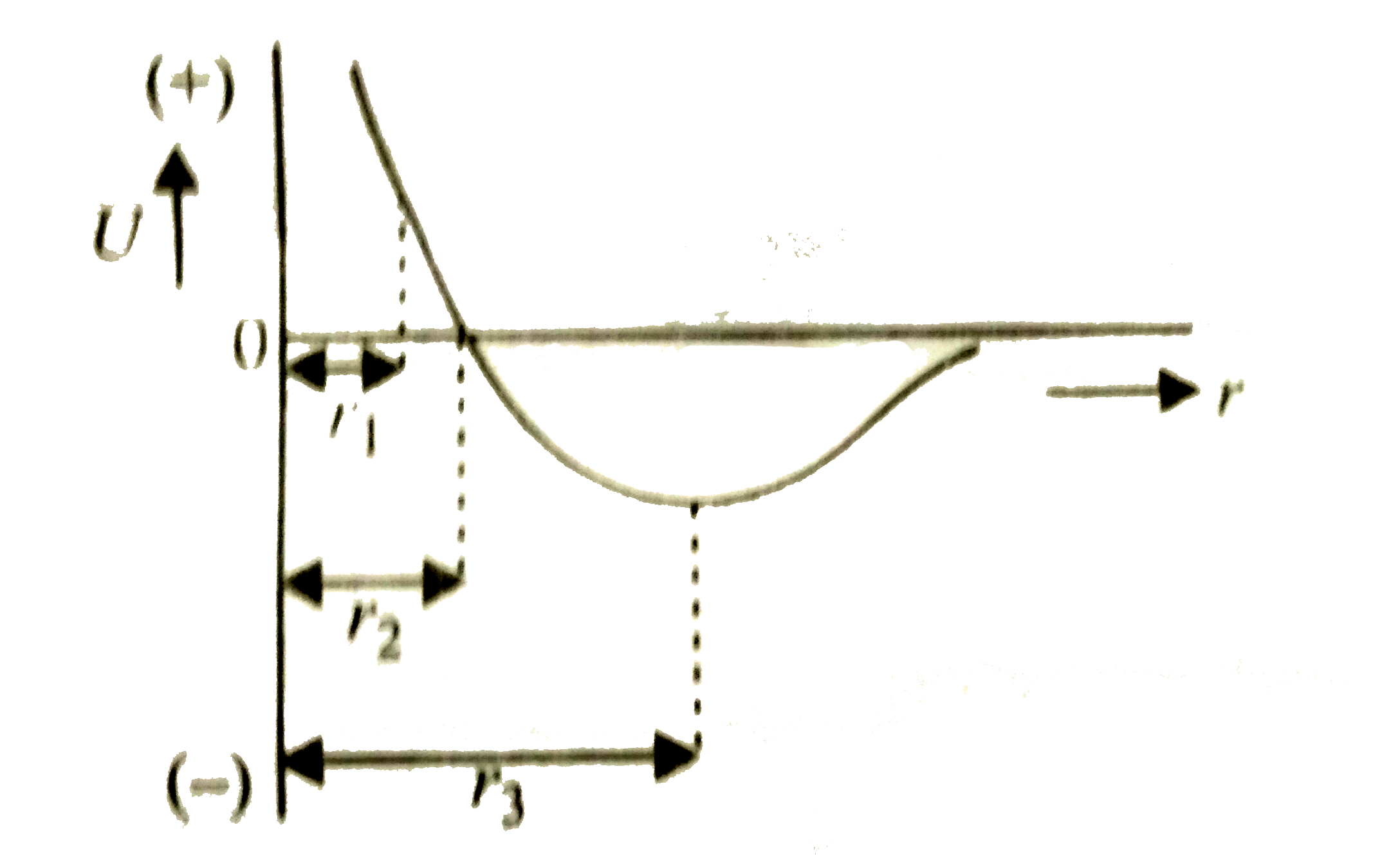
Read the following statement carefully.
1. The equilibrium separation distance between the atoms is equal to r2.
2. At r=r1, the force between the atom is repulsive.
3. Forr>r2, the force between the atoms is attractive
Which of the above statements is true ?A1 onlyB2 onlyC3 onlyD2 and 3
When two bodies A and B interact with each other, A exerts a force of 10N on B, towards east. What is the force exerted by B on A?
View SolutionA diatomic molecule has atoms of masses m1 and m2. The potential energy of the molecule for the interatomic separation r is given by V(r)=−A+B(r−r0)2, where r0 is the equilibrium separation, and A and B are positive constants. the atoms are compressed towards each other from their equilibrium positons and released. what is the vibrational frequency of the molecule?
View SolutionTwo point charges 9 μC and −2μC are placed at a separation of 20 cm from each other.
(i) Calculate the electric potential energy of this system of two charges.
(ii) What amount of work is required to separate the particles to infinite separation?View SolutionStatement I : For the stable equilibrium force has to be zero and potential energy should be minimum.
Statement II : For the equilibrium it is not necessary that the force is not zero.View SolutionIf the potential energy is minimum for two atoms at r0=0.75Å. This is the equilibrium distance. Then,
View Solution

